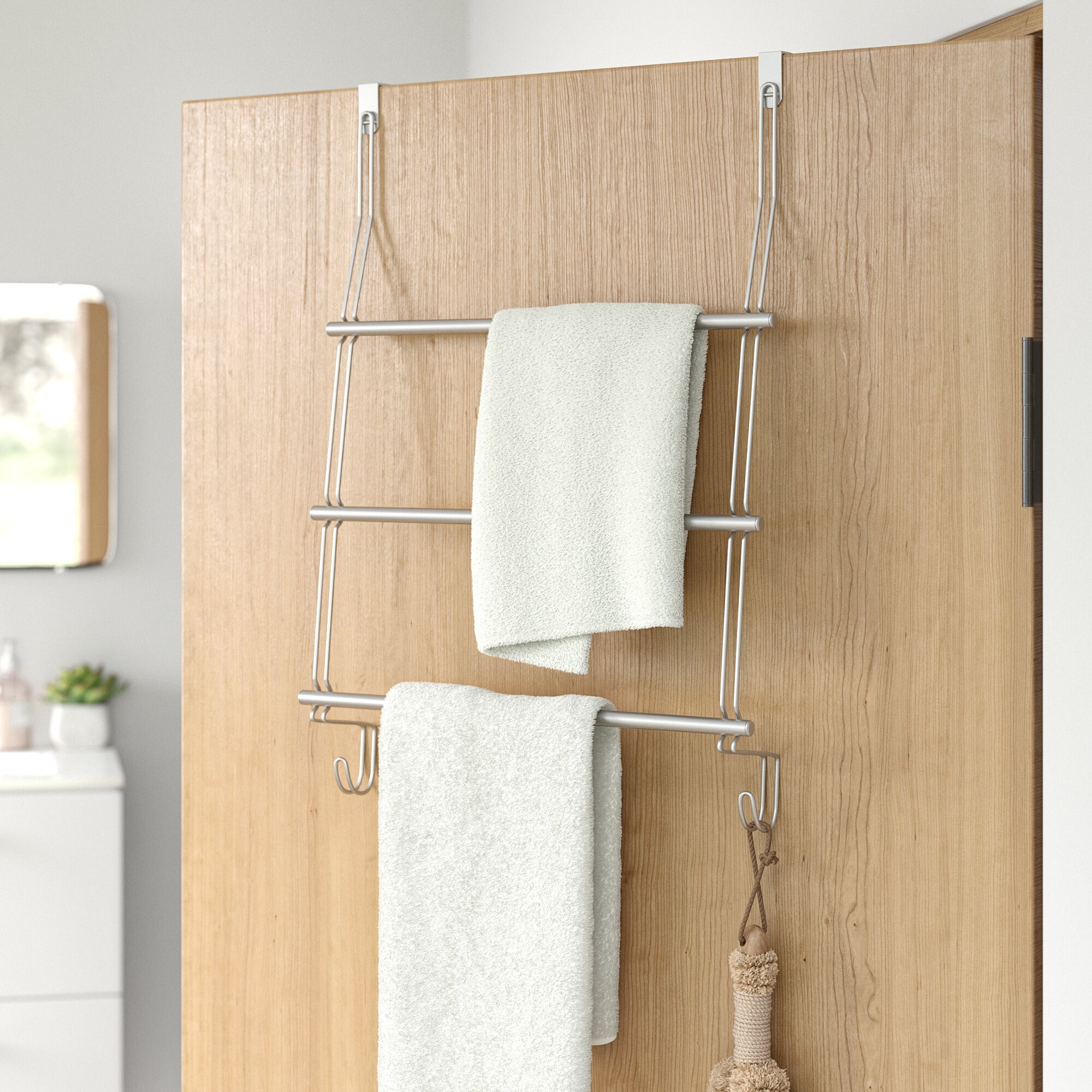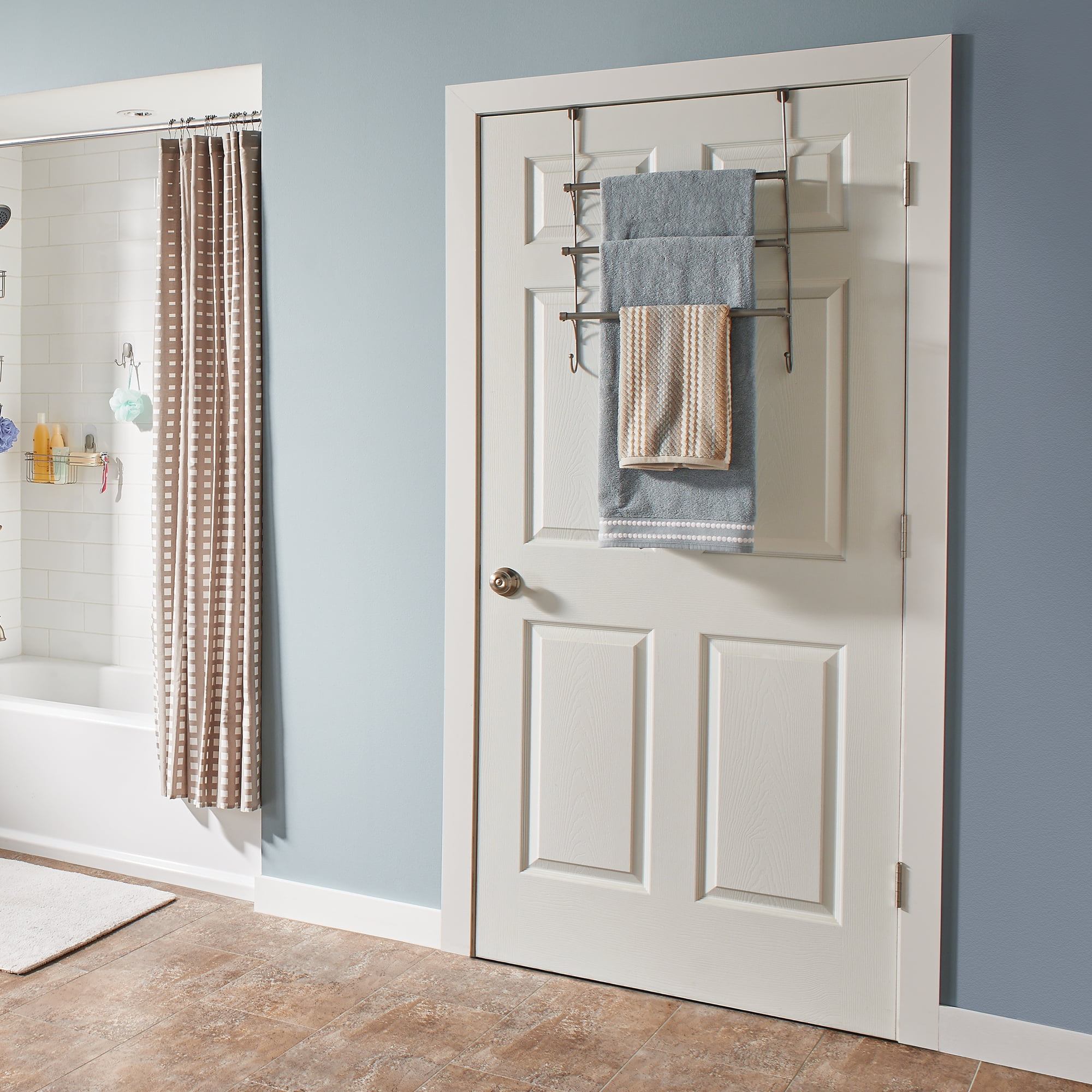Product Overview and Features

Over-the-cabinet door towel racks offer a convenient and space-saving solution for storing towels and other kitchen necessities. They are a simple yet effective way to maximize storage in smaller kitchens or areas with limited counter space. A variety of designs and materials are available to suit different needs and aesthetics.
Types of Over-the-Cabinet Door Towel Racks, Over the cabinet door towel rack
Over-the-cabinet door towel racks come in a wide array of styles, materials, and designs. Understanding these differences helps consumers choose the best option for their specific requirements. The most common materials include metal (steel, aluminum), plastic, and wood. Mounting mechanisms typically involve a simple over-the-door hook system, sometimes supplemented with adhesive strips for added stability, particularly for lighter racks. Weight capacity varies significantly depending on the materials and construction; expect to see capacities ranging from a few pounds for lighter plastic racks to upwards of 10 pounds or more for sturdy metal options.
Advantages and Disadvantages of Different Designs
Space-saving is a primary advantage of over-the-cabinet door towel racks, utilizing otherwise unused space on cabinet doors. Ease of installation is another key benefit; most models require minimal tools and can be installed in minutes. Durability varies considerably. Metal racks tend to be more durable and long-lasting than plastic ones, which can be prone to cracking or breaking under stress. However, plastic racks are often lighter and less expensive. Wood racks offer a more aesthetically pleasing option but may be more susceptible to moisture damage and require more careful maintenance. The choice between these materials often comes down to a trade-off between durability, cost, and aesthetic preference.
Comparison of Over-the-Cabinet Door Towel Racks
The following table compares four different over-the-cabinet door towel racks, highlighting their key features, price range, and customer ratings (where available). Note that prices and ratings can fluctuate based on retailer and time of purchase.
| Product Name | Key Features | Price Range | Customer Rating |
|---|---|---|---|
| Heavy-Duty Metal Towel Rack | Durable steel construction, multiple towel bars, strong over-the-door hook, high weight capacity (up to 15 lbs) | $20 – $35 | 4.5 stars (based on 100 reviews) |
| Space-Saving Plastic Rack | Lightweight, compact design, multiple compartments for towels and other items, easy installation, affordable | $10 – $15 | 4 stars (based on 50 reviews) |
| Wooden Towel Rack with Shelf | Rustic design, adds a touch of elegance to the kitchen, integrated shelf for additional storage, requires careful maintenance | $25 – $40 | 4.2 stars (based on 75 reviews) |
| Over-the-Door Hanging Organizer with Towel Bar | Versatile design, combines towel storage with additional storage for other items, multiple hooks and compartments, typically made of fabric or mesh | $15 – $25 | 3.8 stars (based on 200 reviews) |
Installation and Usage

Installing your over-the-cabinet door towel rack is a straightforward process, designed for ease and convenience. This section will guide you through the steps, highlighting potential challenges and offering solutions for a smooth installation and years of reliable use. Remember, safety is paramount; always prioritize careful handling and follow the manufacturer’s instructions included with your specific product.
Step-by-Step Installation Guide
The installation process typically involves several simple steps. Visualize each step as a building block, each contributing to the final, functional installation.
- Preparation: Before beginning, ensure the cabinet door is clean and dry. Check the towel rack’s packaging for any included hardware or instructions. You might need a screwdriver, depending on the type of rack.
- Attachment: Most over-the-cabinet door towel racks utilize a hook-and-loop or clamping mechanism. For hook-and-loop systems, firmly press the adhesive pads onto the inside of the cabinet door, ensuring complete contact. For clamping mechanisms, carefully align the clamps with the door’s edge and tighten according to the manufacturer’s instructions. This step requires precise alignment to ensure stability and prevent damage to the cabinet door.
- Testing: Once installed, gently test the rack’s stability by hanging a light weight on it. This will help identify any loose connections or potential issues before adding heavier items. If any instability is detected, re-check the installation and make the necessary adjustments.
- Positioning: Adjust the rack’s height and position to optimize accessibility and avoid interfering with cabinet hinges or other door mechanisms. Consider the frequency of use and the placement of other items within the cabinet. A slightly higher position may be beneficial for heavier towels to avoid bending the rack.
Troubleshooting Common Installation Problems
Occasionally, unforeseen issues may arise during installation. Proactive understanding of these potential problems and their solutions can prevent delays and frustration.
- Problem: The rack is unstable or falls off the door. Solution: Ensure the adhesive pads are firmly attached, or that the clamps are securely tightened. Consider cleaning the cabinet door surface to remove any dust or debris that might impede adhesion. For particularly heavy towels or a poorly-fitting rack, explore alternative mounting options or a different rack design.
- Problem: The rack interferes with the cabinet door’s opening or closing. Solution: Carefully adjust the rack’s position, ensuring sufficient clearance for the door’s full range of motion. If adjustments prove insufficient, repositioning the rack or choosing a smaller model might be necessary.
- Problem: The rack’s hardware is damaged or missing. Solution: Contact the manufacturer for replacement parts or seek a similar replacement part from a hardware store. Be sure to check the manufacturer’s website for diagrams or contact information.
Maximizing Functionality and Lifespan
Proper care ensures longevity and optimal performance of your towel rack. These simple maintenance steps contribute to extended usability and aesthetic appeal.
Over the cabinet door towel rack – Regular cleaning with a damp cloth and mild detergent will remove dirt and prevent the buildup of grime. Avoid abrasive cleaners or harsh chemicals, which can damage the rack’s finish. For particularly stubborn stains, a paste of baking soda and water can be gently applied, followed by thorough rinsing. Periodically inspect the rack for any signs of wear and tear, tightening any loose screws or replacing damaged parts promptly. Avoid overloading the rack with excessively heavy or wet items, which can strain the structure and lead to premature failure. By following these simple maintenance steps, you can enjoy your over-the-cabinet door towel rack for many years to come.
Customer Reviews and Alternatives: Over The Cabinet Door Towel Rack

Over-the-cabinet towel racks have become a popular solution for maximizing space in smaller kitchens and bathrooms. However, like any product, they receive a mixed bag of reviews, offering valuable insights for potential buyers. Understanding both the positive and negative aspects, alongside exploring alternative options, helps ensure you make the best choice for your needs.
Positive reviews frequently highlight the space-saving design and convenient accessibility of these racks. Many users appreciate the ease of installation and the added storage they provide without taking up valuable counter or floor space. The ability to keep towels readily available and neatly organized is a recurring theme of praise. Conversely, negative feedback often centers around durability concerns. Some users report that the racks can be flimsy or prone to bending under the weight of heavier towels, especially over time. Another common complaint revolves around the fit, with some racks not accommodating all cabinet door thicknesses or styles equally well. The potential for scratching cabinet doors is also a recurring concern.
Positive and Negative Customer Feedback Summary
The most common positive feedback focuses on the convenience and space-saving nature of the product. Users appreciate having towels readily accessible and neatly organized without sacrificing valuable counter or floor space. Conversely, negative feedback often revolves around durability and fit issues. Reports of flimsy racks, difficulty with installation due to inconsistent cabinet door thicknesses, and the potential for scratching cabinets are prevalent.
Alternative Towel Storage Solutions
Several alternatives exist for storing towels in small kitchens or bathrooms, each with its own set of advantages and disadvantages. A careful consideration of your specific needs and space constraints is crucial in choosing the best option.
One alternative is a free-standing towel rack. These racks come in various designs, materials, and sizes, offering flexibility in terms of style and placement. Pros include their stability and often higher weight capacity compared to over-the-cabinet options. Cons, however, include the floor space they occupy, making them less suitable for extremely small bathrooms or kitchens.
Another option is a wall-mounted towel bar or rack. These offer a sleek and space-saving solution, keeping towels off the floor and counters. The pros include a clean aesthetic and secure mounting, but installation requires drilling into the wall, which may not be feasible or desirable in all situations. Additionally, the available space on the wall must be considered.
Finally, consider a simple towel hook. While offering minimal storage, a well-placed hook can be surprisingly effective, especially for smaller families or individuals. The pros are its low cost and ease of installation, requiring only a single screw. The con is the limited storage capacity.
